A look back on the people and events that made headlines in the shadow of Everest
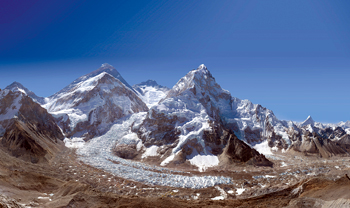
GLACIERWORKS
Ever since Tenzing Norgay and Edmund Hillary climbed Mt Everest on 29 May 1953, a lot has changed on the world’s highest mountain. The 60th anniversary of the climb coincides with the announcement this month that the concentration of carbon dioxide in the atmosphere has crossed the 400ppm mark, one-third more than at the start of the Industrial Revolution. Burning fossil fuels and pumping the carbon into the atmosphere has warmed the planet, leading to erratic weather patterns, more intense storms, sea level rise and the melting of the polar ice caps. The Himalayan mountains are melting three times faster than the poles. This panorama of Mt Everest by American filmmaker and climber David Breashears may look scenic, but is an apocalyptic image of glacial retreat.
In the decades after he climbed Everest, Hillary kept returning to Nepal to help with education and health projects. The Sagarmatha National Park became a model for eco-tourism. The per capita income of the Khumbu is now four times the national average. There has also been a dramatic change in mountaineering, with more and more commercial expeditions generating employment for Sherpas.
PRICE TAG
This season Nepal made Rs 250 million in royalty alone from 30 teams and 335 foreign mountaineers climbing Mt Everest from the south side. The permit fee varies from season to season, the route taken and the number of members in the team. For example a seven member team on the normal South Col route in spring would have to pay $70,000 whereas a seven member expedition on any other route in spring would pay $50,000. If an expedition has more than seven members, it has to pay $10,000 per climber extra.
1953

Edmund Hillary and Tenzing Norgay climbed Everest on 29 May, 1953. They reached the summit after a gruelling climb up the South-east ridge. They were part of the ninth British expedition to Everest, led by John Hunt.
1960
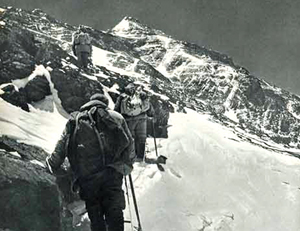
First ascent from the North-face by a Chinese expedition. The route was first made famous by George Mallory and Andrew Irvin in 1924 who were last seen at around 8300 metres on the mountain.
1961
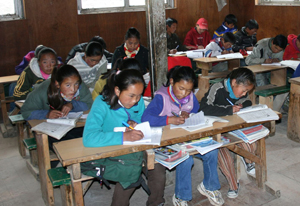
Edmund Hillary founded Khumjung school, the first one in the Khumbu region. Hillary's Himalayan Trust built dozens of schools and health posts.
1964
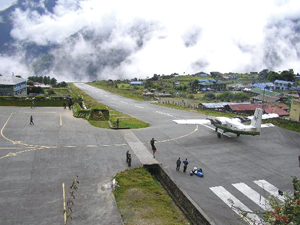
The Everest region got a boost when Edmund Hillary converted potato fields near a small village called Lukla into the famous airstrip with its inclined runway. It was renamed Tenzing-Hillary airport in 2008.
1966
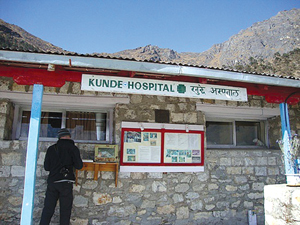
Khunde Hospital was established. The hospital built by Edmund Hillary’s Himalyan Trust with assistance from the New Zealand government is still the only hospital that operates all year round in Khumbu.
1975

Hillary's daughters and wife killed in a plane crash in Kathmandu. They were on their way to Phaplu where Hillary was helping build a school.
1975
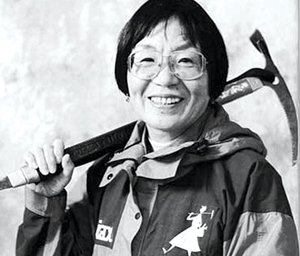
Junko Tabei of Japan became the first woman to reach the summit. Tabei went on to climb all the seven highest mountains in the world, finishing her seven summits in 1991.
1976

Sagarmatha National Park was established . Covering an area of 124,400 hectares in the Solukhumbu district, the park is home to several rare animal species such as the snow leopard and the red panda It was recognised by UNESCO as a world heritage site in 1979.
1978
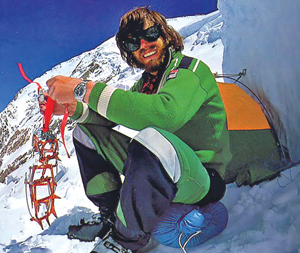
First ascent without bottled oxygen by Reinhold Messner. The Italian used the southeast ridge route and was accompanied by Peter Habeler of Austria. He later climbed Everest solo in 1980.
1985
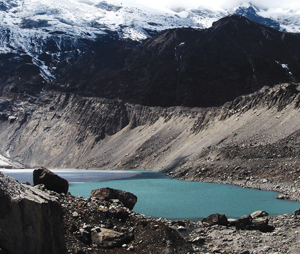
Dig Tsho glacial lake near Thame burst and the flood rushed 90km down the Dudh Kosi killing 12 people and destroying Namche Bazar’s hydropower plant.
1989
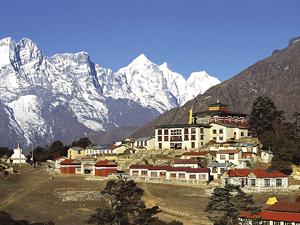
Tengboche monastery was destroyed by fire in 1989. The largest monastery in the region was earlier destroyed by an earthquake in 1934. The monastery was restored with the help of volunteers and international assistance.
1990
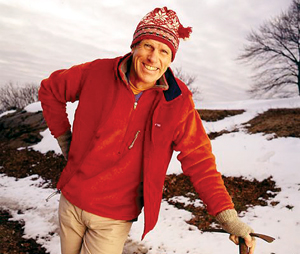
Peter Hillary followed in his father's footstep and climbed Everest. Peter also went on to climb the highest mountains in all the seven continents.
1993
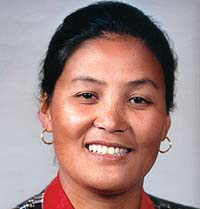
Pasang Lhamu Sherpa became the first Nepali woman to reach the top of Everest. This was her fourth attempt but she died while descending.
1996
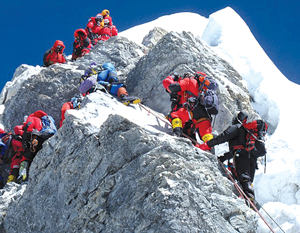
The deadliest single year in Everest history.Fifteen people died trying to reach the summit in a storm. It also became the subject of the best-selling book Into Thin Air by John Krakauer, one of the climbers who made it back.
1996
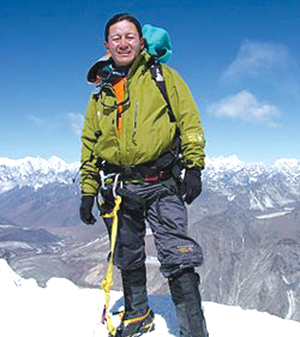
Tenzing's son, Jamling Tenzing Norgay, followed in his father's footsteps and climbed Everest. Norgay went on to write Touching My Father's Soul, a book documenting his experiences on the summit attempt.
2001
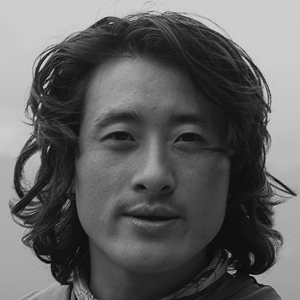
Sixteen-year-old Temba Tsheri Sherpa became the youngest climber ever to scale the summit. The record was later broken by thirteen -year- old Jordan Romero when he scaled Everest in 2010.
2003
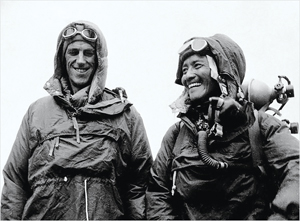
Jamling and Peter Hillary, climbed Everest for the second time. The sons of Tenzing Norgay and Edmund Hillary climbed the summit to commemorate the 50th anniversary of the climb of their fathers.
2003
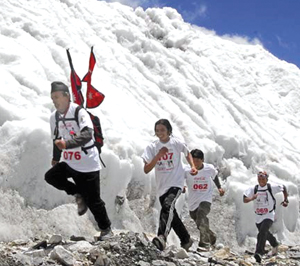
First Tenzing Hillary Everest Marathon. It starts from Everest Base Camp (5364m) and finishes at Namche Bazaar (3446m). The measured distance of the course is 42.195 km over rough mountain trails.
2005
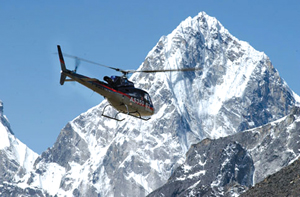
French pilot Didier Delsalle puts helicopter on Mt Everest, setting the world record for the highest ever landing and takeoff in 2005. Despite the controversy over the landing, Fédération Aéronautique Internationale (FAI) recognised the record.
2008
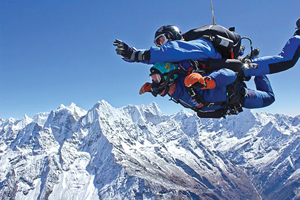
First ever sky diving near Everest in 2008. A trio of British adventurers became the first to take the plunge from above the world’s highest peak.
2009
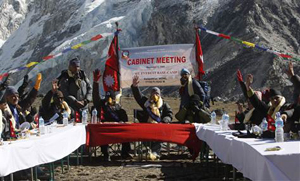
Nepal government held a cabinet meeting at Kalapathar to draw international attention to the effects of climate change in the Himalaya.
2010
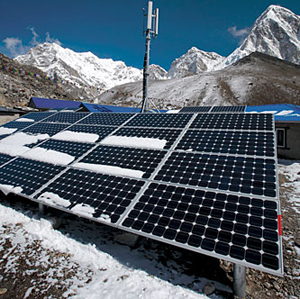
3G network reached Everest. Mobile phone operator Ncell set up the world’s highest third generation mobile network installing eight 3G base stations along the route to Everest base camp.
2011
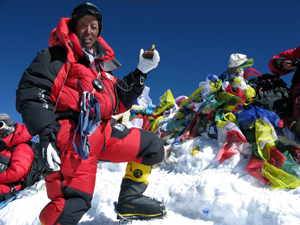
Apa Sherpa climbed the summit 21 times and announced retirement from Everest expeditions. He has been working to draw attention to the impact of climate change in the Himalaya. His record was equalled in 2013 by Phurba Tashi.
2013
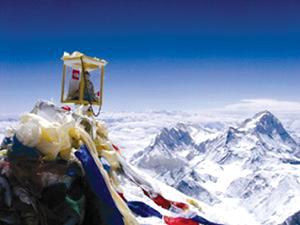
The fist-fight near Camp 3 between Sherpas and three world renowned Alpine-style climbers broke out in April. It shook the mountaineering world, and divided the tourism fraternity into distinct camps depending on whose version of events they believe more.